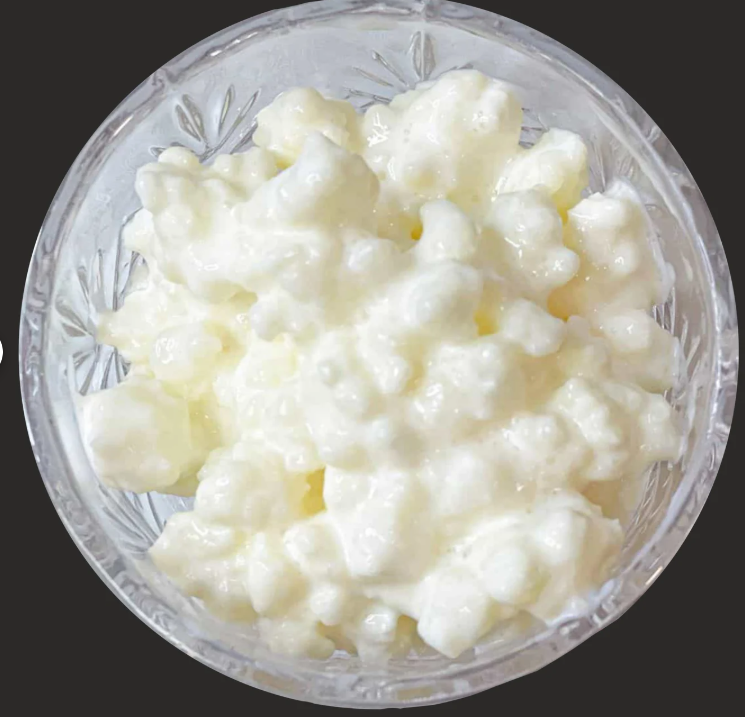Unlock the Incredible Health Benefits of Fermentation for Optimal Well-Being
Fermentation is a revered culinary tradition that has recently experienced a remarkable resurgence in modern gastronomy. This revival highlights the growing public awareness surrounding health and nutrition. At its core, fermentation employs microorganisms to convert sugars and organic materials into an array of products, including acids, alcohols, and gases. This fascinating transformation not only extends the shelf life of food but also significantly enhances its nutritional profile. As a result, fermentation plays an essential role in a balanced diet. Increasingly, people around the globe are recognising the profound relationship between gut health and overall well-being. By exploring the realm of fermentation, you can work towards achieving your health goals and cultivating a more vibrant lifestyle.
To fully appreciate the vast array of fermentation, it is essential to understand its fundamental processes. This knowledge is especially important for those eager to craft DIY fermented foods: straightforward recipes that promote a healthier gut. The fermentation process is heavily reliant on the metabolic activities of beneficial microorganisms. Specifically, bacteria and yeasts work in unison to transform ordinary ingredients into probiotic-rich creations. Through fermentation, we can produce a diverse range of foods, including sauerkraut, kimchi, and kombucha, each offering unique flavours and distinct health advantages. For example, the lactic acid bacteria found in these foods are instrumental in restoring the natural balance of gut flora, potentially leading to improved digestion and a strengthened immune system.
If you prefer audio content, click below to listen.
Maximise the Health Benefits of Fermented Foods in Your Everyday Diet
The benefits of integrating fermented foods into your dietary routine are extensive and truly significant. These foods are abundant in probiotics, which play a vital role in enhancing gut health, supporting digestion, and contributing to a robust immune system. Fermented foods are known to improve nutrient absorption; for instance, the fermentation process breaks down complex nutrients, making them more bioavailable to our bodies. As you embark on your fermentation journey, starting with the right equipment—such as jars, weights, and airlocks—is essential. Understanding the principles of hygiene and temperature control during fermentation is equally important, as these factors ensure the safety of your food and the success of your culinary projects.
Delving into the various types of fermentation can reveal an exciting array of flavours and possibilities. For example, lactic acid fermentation imparts a zesty taste to foods like pickles, while ethanol fermentation is predominantly used in the creation of alcoholic beverages. Furthermore, acetic acid fermentation is fundamental in vinegar production, showcasing yet another dimension of fermentation techniques. Each method has its own unique charm and characteristics, opening up endless opportunities for creativity and experimentation in your kitchen.
Practice Safe Fermentation Methods for the Best Results
Safety should always be a priority during the fermentation process. While the steps involved in fermentation are generally straightforward, there are inherent risks to consider. Contamination and spoilage can occur if proper procedures are not followed. It is vital to learn how to effectively sterilise your equipment and closely monitor the progress of your ferment. Moreover, recognising the signs of spoilage is crucial, whether you are a novice or an experienced fermenter. By adhering to established safety guidelines, you can significantly mitigate the risk of spoilage and contamination.
Crucial Ingredients for Consistently Successful Fermentation
Selecting Quality: The Significance of Organic Vegetables in Fermentation
Choosing the right ingredients is essential for achieving successful fermentation. Fresh, organic vegetables—such as cabbage, cucumbers, and carrots—make excellent starting points. These vegetables are naturally rich in sugars and retain sufficient moisture, both of which are crucial for the fermentation process. Opting for organic produce also brings added benefits, as it often contains higher levels of beneficial bacteria necessary for effective fermentation. By sourcing your ingredients from local farmers' markets or cultivating your own, you not only enhance the flavours of your ferments but also promote sustainable farming practices that contribute to healthier ecosystems.
The Role of Salt: Achieving the Perfect Brine Balance for Fermentation
Salt plays a vital role in the fermentation process, acting as a natural preservative. It assists in drawing moisture from the vegetables, creating a brine that nurtures the growth of beneficial bacteria while simultaneously inhibiting harmful microbes. Striking the ideal salt balance is crucial; too much salt can impede fermentation, while too little can result in spoilage. Feel free to experiment with different types of salt, such as sea salt or Himalayan pink salt, as these alternatives can impart unique flavours to your ferments and enhance their overall appeal.
Enhance Your Fermented Creations with Spices and Herbs for Added Flavour
Incorporating a variety of spices and herbs into your fermentation process can significantly elevate your culinary experience, bringing depth and complexity to the flavours. For instance, adding spices like dill, garlic, and mustard seeds can transform a standard batch of sauerkraut into a culinary masterpiece. Similarly, herbs such as bay leaves and peppercorns can infuse your ferments with subtle aromatic qualities that enhance the overall taste profile. The beauty of fermentation lies in its adaptability, allowing you to customise your creations to reflect your personal preferences or draw inspiration from global culinary traditions.
Understanding the role of each ingredient is crucial on your fermentation journey. A well-balanced combination of flavours, textures, and aromas will not only make your DIY fermented foods enjoyable but also beneficial for your health. These elements work synergistically to support your well-being while tantalising your taste buds. When considering global cuisine, the possibilities are truly limitless, offering abundant opportunities to draw inspiration from diverse cultures and their traditional fermentation methods.
Global Ingredient Exploration: Fermenting with Local and Exotic Produce
As you gather your ingredients, consider the geographical diversity of vegetables that different regions provide. For instance, cabbage is a staple in many European ferments, while tropical regions frequently utilise fruits like mangoes or papayas due to their unique fermenting properties. By exploring ingredients from around the globe, you open yourself up to exciting new flavours that can connect with your culinary heritage or introduce you to entirely new taste experiences.
Master Essential Fermentation Techniques for Delicious Home-Cooked Goodness
Lacto-Fermentation: Your Ultimate Method for Promoting Gut Health
The realm of fermentation reveals a multitude of opportunities, offering techniques that cater to various tastes and preferences. Among the most celebrated methods is lacto-fermentation, which utilises lactic acid bacteria to preserve and ferment vegetables. This technique allows for a wide variety of flavours and textures, resulting in beloved staples like sauerkraut and kimchi. The tangy notes produced by lactic acid impart a distinctive character to these dishes, earning them admiration from enthusiasts worldwide.
Water-Brine Technique: Crafting Crunchy Pickles with Customised Flavours
Exploring the water-brine fermentation method unveils another efficient technique that involves submerging vegetables in a saltwater brine. This approach is particularly effective for creating pickles and other crunchy ferments, as it helps the vegetables retain their crispness while developing flavours over time. The process typically lasts from a few days to several weeks, depending on the ambient temperature and your desired taste. This method offers ample room for experimentation, allowing you to play around with various spices and flavours to suit your palate.
The dry-salting technique represents another simple yet effective fermentation approach. By sprinkling salt directly onto vegetables, you can extract their natural juices, creating the brine necessary for successful fermentation. This method is especially effective for leafy greens, promoting moisture release and forming the brine required for effective fermentation. The simplicity of this technique makes it accessible for beginners while still providing numerous opportunities for flavour enhancement and creativity.
Fermenting Beverages: Creating Delicious Kefir and Kombucha
Fermentation techniques such as kefir and kombucha offer exciting alternatives that transform milk and tea into probiotic-rich beverages. These methods utilise kefir grains or a SCOBY (symbiotic culture of bacteria and yeast) to produce fizzy, tangy drinks teeming with health benefits. Kombucha, in particular, has gained immense popularity globally due to its refreshing, effervescent quality that supports gut health and overall wellness.
The techniques you choose will ultimately align with your personal preferences and culinary aspirations. Each method presents its own distinctive flavours and benefits, allowing you to delve into the diverse world of DIY fermented foods: straightforward recipes tailored for a healthier gut. Embracing these techniques empowers you to create an expansive array of delicious fermented foods, enhancing your meals while simultaneously supporting your health.
Discover Popular Fermented Foods to Enrich Your Culinary Experience
Sauerkraut: A Tangy Classic with Enduring Popularity
Among the extensive selection of fermented foods, sauerkraut stands out as a cherished staple. Made from finely shredded cabbage mixed with salt, sauerkraut undergoes fermentation, resulting in a tangy, probiotic-rich condiment. This classic dish has roots in various cultures, from Germany to Eastern Europe, with each region adding its unique twist. Sauerkraut can be enjoyed in numerous ways—on sandwiches, in salads, or as a side dish—making it a versatile addition to any meal and allowing you to relish its health benefits in various forms.
 Kimchi: Spicy, Bold, and Rich in Probiotics
Kimchi: Spicy, Bold, and Rich in Probiotics
In contrast, kimchi is a spicy Korean ferment that has captured the hearts of food enthusiasts around the world. Typically crafted from napa cabbage, radishes, and a vibrant array of seasonings, kimchi delivers a delightful zing to the taste buds. The fermentation process not only intensifies flavours but also offers a multitude of health benefits. Rich in probiotics and vitamins, kimchi is an excellent choice for enhancing gut health, and its bold, spicy flavours provide an exciting culinary adventure.
Dill Pickles: Crunchy, Zesty, and Irresistibly Tasty
Dill pickles, or pickled cucumbers, represent another refreshing option within the realm of fermentation. Their crunchy texture and zesty flavour make them a favourite for snacking, while also adding a burst of flavour to various dishes. The pickling process involves immersing cucumbers in a brine solution, often incorporating an array of spices and herbs. This method not only preserves the cucumbers but also transforms them into a delectable treat that elevates any meal.
Beyond the Essentials: Explore Miso, Kefir, and Other Exciting Fermented Delicacies
Venturing beyond these popular selections reveals a diverse world of fermented foods waiting to be explored. Miso paste offers a tangy richness, while kefir provides a light, fizzy appeal. Each fermented product boasts unique flavours and health benefits. As you navigate the landscape of DIY fermented foods and simple recipes designed for a healthier gut, take the time to experiment with different techniques. This hands-on approach will not only help you discover what suits your taste and lifestyle best but also allow you to delve into the rich tapestry of flavours and traditions that fermentation has to offer.
Embracing these fermented foods will not only enhance your overall health but also connect you to diverse global culinary traditions. When sharing these dishes with friends and family, you’re offering more than just delicious food; you’re introducing them to a rich blend of flavours and cultural practices, making your culinary journey even more fulfilling and meaningful.
Explore the Fermentation of Fruits and Dairy Products
Fermented fruit chutneys present a delightful way to incorporate the benefits of fermentation into your meals, all while adding an explosion of flavour. By fermenting fruits like mangoes and apples with spices, you create zesty chutneys that are full of flavour and pair beautifully with a variety of dishes. These chutneys offer a delightful tangy sweetness that enhances the overall profile of your meals, making them perfect companions for curries, sandwiches, and cheese platters.

Probiotic-Rich Dairy: Easily Craft Yogurt and Kefir at Home
Yogurt and kefir are two dairy products abundant in probiotics, offering a myriad of health benefits. The fermentation of milk with live cultures yields creamy, tangy yogurt that can be savoured in various ways—as a breakfast staple, a smoothie base, or a refreshing dip. In contrast, kefir has a thinner consistency and a slightly effervescent quality, making it an excellent beverage choice for promoting gut health. Both yogurt and kefir can be easily made at home, allowing for experimentation with different flavours and ingredients to cater to your personal preferences.
Refreshing and Probiotic-Rich: Sip on Fermented Fruit Juices
Fermented fruit juices represent an exciting avenue within the fermentation landscape, offering a way to create healthy, fizzy beverages that are both refreshing and beneficial for gut health. These drinks can range from simple apple cider to more complex combinations such as ginger-pineapple or beet-carrot. Not only do they provide a delicious way to stay hydrated, but they also come packed with probiotic benefits. As you embark on your journey of fermenting fruits and dairy, you will discover a variety of flavours and textures that can add depth and excitement to your culinary creations.
The versatility of these ingredients enables you to adapt recipes according to seasonal produce, personal tastes, or cultural inspirations. Embrace the creativity inherent in DIY fermented foods: simple recipes designed for a healthier gut, and indulge in the endless possibilities that fermentation has to offer.
The journey of fermentation transcends mere food preservation; it celebrates a fusion of flavours, cultures, and health. By incorporating fermented fruits and dairy into your meals, you pave the way for a more balanced diet while also exploring the rich and diverse world of global culinary traditions.
Your Comprehensive Guide to Common Questions About Fermentation
What is the easiest fermented food for beginners to attempt?
 Sauerkraut is commonly recommended for novices due to its straightforward process and minimal ingredient requirements. All you need is cabbage and salt, making it a readily accessible project for anyone eager to explore the fascinating world of fermentation.
Sauerkraut is commonly recommended for novices due to its straightforward process and minimal ingredient requirements. All you need is cabbage and salt, making it a readily accessible project for anyone eager to explore the fascinating world of fermentation.
How long does it take for fermented foods to be ready for enjoyment?
The time needed for fermentation can vary widely depending on the type of food and environmental factors. Generally, most vegetable ferments require approximately 1 to 4 weeks to develop their flavours, while dairy ferments like yogurt may be ready in as little as a few hours to a day.
Can I use regular table salt for my fermentation activities?
While it is possible to use table salt, it is advisable to opt for non-iodised salts such as sea salt or kosher salt. These alternatives do not contain additives that could hinder fermentation and can enhance the flavours of your ferments.
How can I tell if my ferment has gone bad?
Signs of spoilage include unpleasant odours, unusual colours, or the presence of mould. If your ferment emits a sour or rancid smell rather than a pleasantly tangy aroma, it is best to discard it to avoid any potential health hazards.
Are there health advantages to consuming fermented foods?
Indeed, fermented foods are rich in probiotics, which can enhance digestion, strengthen the immune system, and improve nutrient absorption. They are also associated with various health benefits, including better gut health and potential mood regulation.
Can I apply the same techniques to ferment fruits as I do with vegetables?
Absolutely! Fruits can be fermented, although the process may differ slightly due to their higher sugar content, which often leads to quicker fermentation. Fermented fruit chutneys or juices are popular options that yield delightful results.
Is it necessary to use a fermentation weight?
While using a fermentation weight is not mandatory, it is highly advisable. Weights help keep the vegetables submerged in the brine, minimising the risk of exposure to air and potential spoilage.
Can I enhance the flavour of my ferments with herbs and spices?
Definitely! Incorporating herbs and spices can significantly elevate the flavour and complexity of your ferments. Ingredients such as garlic, dill, and mustard seeds can provide distinctive tastes to your fermented creations.
What is the best method for storing my fermented foods?
After fermentation, transfer your fermented foods to airtight containers. Store them in the refrigerator to slow down the fermentation process, helping to preserve their flavours and health benefits for a longer duration.
Can I ferment non-dairy milk?
 Yes, non-dairy milk can be fermented to create delicious plant-based yogurts. By using options like coconut, almond, or soy milk along with suitable starter cultures, you can create a probiotic-rich alternative to dairy.
Yes, non-dairy milk can be fermented to create delicious plant-based yogurts. By using options like coconut, almond, or soy milk along with suitable starter cultures, you can create a probiotic-rich alternative to dairy.
Join us on Facebook for more tips and delectable recipes!
The Article: DIY Fermented Foods: Easy Recipes for a Healthier Gut first appeared on https://janestevensnutrition.com
The Article Fermented Foods DIY: Simple Recipes for Gut Health Was Found On https://limitsofstrategy.com

